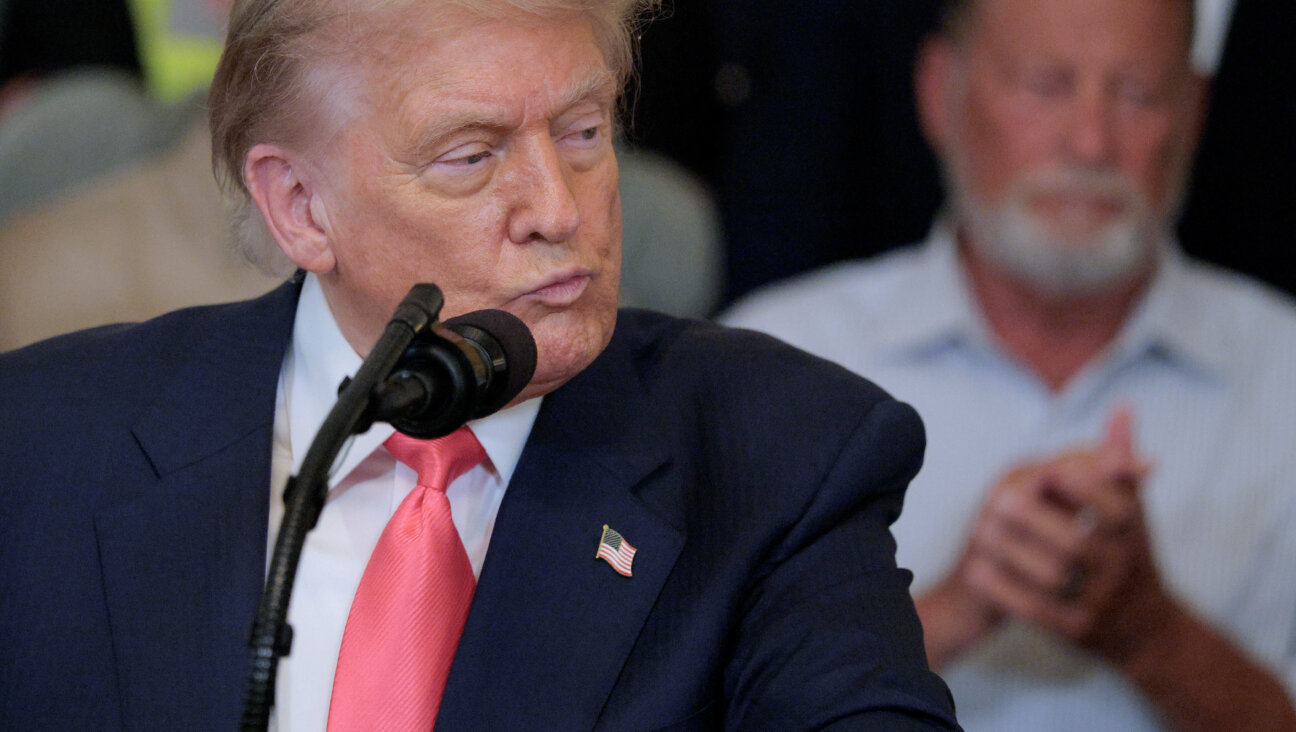The Torah of Max Ticktin Will Not Be Forgotten

He Brought Torah: Max Ticktin (right) pictured with his wife Esther. Image by Lloyd Wolf
Forty years ago, I was still living in Washington DC and was still a member of Fabrangen — one of the earliest havurah-style minyanim –– when I noticed something odd that one of our members was doing when the Torah scroll was joyfully carried around the community on Shabbat morning.
The member was Rabbi Max Ticktin. What I noticed was that while everyone else in the community touched their tzitzit, the fringes of their prayer shawls, to the Torah scroll and kissed them, Max also touched his tzitzit to the person who was carrying the Torah. So I asked him why, and this is what he said:
Any person who carries a Torah is himself, herself, a Torah.
Max Ticktin, who passed away on July 3, carried many Torahs in his lifetime. He was himself a Torah of the highest honesty, decency and wisdom.
He studied at the Jewish Theological Seminary when both Rabbis Abraham Joshua Heschel and Mordecai Kaplan were teaching there, and drew deeply on the disagreements between those giants to shape himself and his rabbinate.
In 1947, he and his beloved wife Esther carried into the pre-state Yishuv — just as statehood was aborning — the Torah of a just and joyful Zionism, committed to the principles that were soon to be emblazoned in the Israeli Declaration of independence. And in 1977, a whole generation later, he affirmed that commitment by becoming a leader of Breira, the first American Jewish organization to call for negotiations between the Israeli government and the Palestine Liberation Organization. He worked in and for Breira because he feared the degradation of Zionism if the Israeli occupation of the Palestinian territories were to continue. And when Breira came under false and bitter attack not just by ultra-right-wingers in American Jewish life, but also by the centrist “official” bodies, Max stood fast in defense of the many Hillel rabbis who had joined with him and others in Breira. Max was proud of a Hillel that in those days invited and inspired creativity and debate.
During the 1950s and early 1960s, Max carried and lifted the Torah of Torah itself — that is, the gorgeous never-ending exploration and midrashic reinterpretation of the ancient text to meet the needs of every generation. He was the Hillel director at the University of Wisconsin in Madison. One of the most remarkable rabbis of our generation, Everett Gendler, was then a student at the University of Chicago. He remembers that the Hillel director at Chicago told the students to travel north to Madison: If they wanted to see what a Hillel foundation could be, they should look at the one Max Ticktin was creating.
Then Max himself became the Hillel director at the University of Chicago and, together with Rabbi Danny Leifer, created the Upstairs Minyan — one of the first passionately committed, passionately creative non-Orthodox, egalitarian Jewish prayer groups in America. It was an early version of what became the havurah movement.
And Max carried the Torah of a Judaism that did not live only in the pews but also in the bodies of the desperate. During those years, abortion was illegal. Max met young women who desperately needed an abortion, and he worked with an underground network to make sure they could get what they needed from competent doctors, rather than risking their lives in back alleys. For this work he was issued an arrest warrant by the state of Michigan, and for years he made sure not to enter the state.
Then in 1972 Max came to Washington DC as the associate director of national Hillel. Most such new-in-the-Capitol officials joined a rich and fancy synagogue. But Max and Esther joined Fabrangen, a very new havurah-style minyan rich only in creativity. They found in Fabrangen the Torah of participatory Judaism, and they came with joy and carefulness to affirm and enrich that Torah. Though their Jewish knowledge surpassed that of the other members, they took care to offer their knowledge without becoming the dominating “rabbis” of this shul-without-a-rabbi (or better, perhaps, the shul where everyone was invited to open up the rebbe-spark within).
And this they did from 1972 until his passing this weekend.
But not only this. For Max found himself two whole new Torahs to carry, and a whole new place to carry them: He was invited to teach at George Washington University the Torah of Yiddish literature and the Torah of modern Hebrew literature. With delight that lit up a mirroring delight in his students, he wove together these other strands of Jewish wisdom.
Yet all these different Torahs were not only intellectual. Max embodied menshlekhkayt. Hundreds of people learned friendship from him and with him. Hundreds learned a gentle honesty.
Just one example: Early in the transformative career of Rabbi Zalman Shachter-Shalomi — long before he became Reb Zalman — Max made sure he brought his spiritual genius to Hillels around the country. Much later, Reb Zalman told the story that on many of his many acid trips into the Kabbalah of LSD, he discovered in the midst of the trip that there had somehow appeared beside him a comrade who was calm and centered, wise and caring. For years he wondered who this spirit-companion was, until finally he realized it was Max.
And that is what it means not only to carry Torah but to become Torah. As Max so many times touched the fringes of his tallit to the Torah-person and kissed the fringes of connection, so we now touch the fringes of our own tallitot to Max. And gently kiss them.
Rabbi Arthur Waskow is the director of The Shalom Center in Philadelphia and a former member of the Forward 50.























